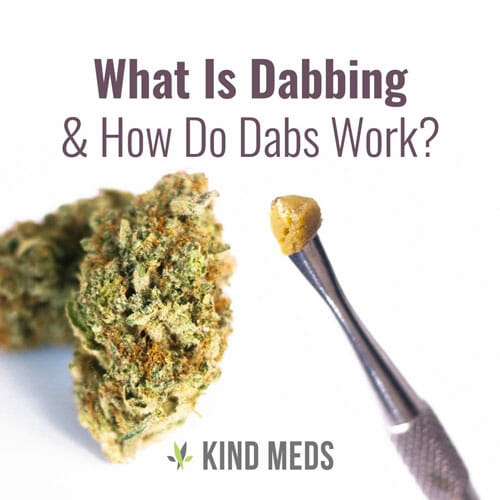The History of Cannabis and Skateboarding
Written by Chris Weatherall on Mar 27, 2023Cannabis and skateboarding aren’t a new phenomenon – in fact, cannabis culture and skate culture have been intertwined for decades. While this cultural affiliation gave birth to the well-known stereotype of the “stoner skateboarder,” that negative association has ebbed with the proliferation of cannabis acceptance throughout the US. In fact, certain cannabinoids have the potential to reduce pain, anxiety, and fatigue. As skateboarding can be such a physically demanding sport, it’s no surprise some skateboarders choose to use cannabis to address these conditions and more.
However, cannabis and skateboarding share more history than injury and pain relief. The two are also connected through their relationships with other subcultures. The link between cannabis and skateboarding has existed for more than 40 years, and with the addition of skateboarding in the Olympics, the connection is more intriguing than ever before.
Skateboarding and Hip Hop Converge
Skateboarding and hip hop share similar origin stories – a few street aficionados in the early to mid-70s eventually grew into a coastal subculture with their own unique style, slang, and vibe. By the 1980s, both skateboarding and hip hop were full-fledged cultural movements creeping inward toward America’s heartland, though certainly more vibrant on the East and West Coasts. By the time skateboarding and hip-hop subcultures began to overlap, the 80s were well underway.
At the time, the link between hip-hop and cannabis use was less apparent, as hip-hop artists of the time preferred to lyricize about alcohol and even the street drug scene. However, the relationship between hip-hop and skateboarding was already making an appearance in this decade, as the skateboarding community and the hip-hop scene began to share similar, street-friendly styles. Both subcultures had adopted signature styles of clothing that often mirrored one another, and hip-hop music from the likes of Run DMC, NWA, and more was known to energize skateboarders.
In fact, both the hip-hop and skateboarding scenes placed emphasis on competitive events in the streets. Just as up-and-coming hip-hop artists were engaging in rap battles on the street, a variety of new skateboarding tricks were conceived by using street elements versus the ramps and rails of the skate parks. Using the streets opened skateboard culture and hip-hop to more people and broadened their influence on one another.
While practice and competitions were taking off, so was the use of cannabis in both cultures. Of course, many skateboarders used cannabis prior to the subcultures converging, though this truly became more prevalent as the 80s progressed. In decades prior, cannabis was considered to be a “hippie” trend, but this quickly evolved into a more up-front component of skate culture. By the time the 90s arrived, cannabis use was readily apparent in hip hop, primarily due to big names like Snoop Dogg and Dr. Dre consistently using cannabis in music videos and public appearances. As skateboarding began its meteoric rise in the 90s, the growing use of cannabis in hip-hop would have the three cultures converging.
The Rise of Skateboarding
Along with the hip-hop scene, skateboarding was practically booming when the 90s arrived. This was thanks to popular skateboarders such as Tony Hawk and Chad Muska. They were pulling off unique tricks on the streets, and these were often televised on extreme sports shows. The rise of skateboarding continued as the decade progressed, with skate-centric television shows, popular skaters featured in advertisements, skateboarding video games, and more.
Clothing companies like Supreme, Vans, DC, and Etnies began selling streetwear inspired by the hip-hop and skateboarding scene. They also created their own skateboards and frequently sponsor local teams in the area. In fact, customers at the first Supreme store were featured in the skateboarding film, Kids. While Kids was considered controversial due to its subject matter and plot, other films like Gleaming the Cube and Thrashin’ were better received and helped paint skateboarding in a positive light. With skateboarding evolving and growing, so was the interest in cannabis.
Along with the hip-hop scene, skateboarding was practically booming when the 90s arrived. This was thanks to popular skateboarders such as Tony Hawk and Chad Muska. They were pulling off unique tricks on the streets, and these were often televised on extreme sports shows. The rise of skateboarding continued as the decade progressed, with skate-centric television shows, popular skaters featured in advertisements, skateboarding video games, and more.
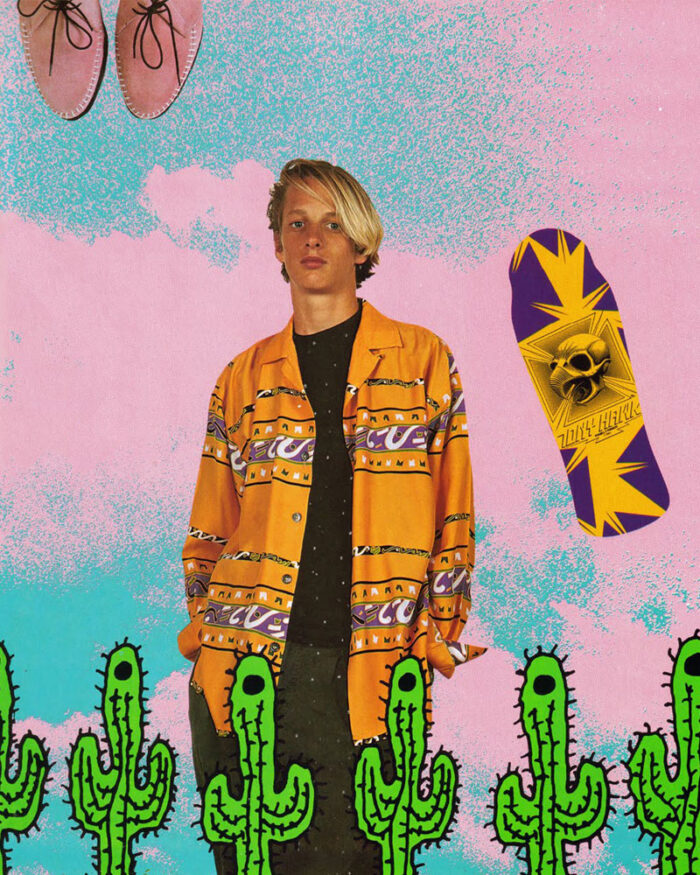
Image credit: Chrome ball interview #102: Tony Hawk
Clothing companies like Supreme, Vans, DC, and Etnies began selling streetwear inspired by the hip-hop and skateboarding scene. They also created their own skateboards and frequently sponsor local teams in the area. In fact, customers at the first Supreme store were featured in the skateboarding film, Kids. While Kids was considered controversial due to its subject matter and plot, other films like Gleaming the Cube and Thrashin’ were better received and helped paint skateboarding in a positive light.
With skateboarding evolving and growing, so was the interest in cannabis.
The Rise of Cannabis
While some professional skateboarders like Tony Hawk publicly avoided THC, preferring to use CBD only, many others found full-spectrum cannabis useful for both getting high and providing pain relief after an injury. Prominent skater Tony Alva, a pioneer of the sport, felt the use of cannabis should be legalized. Perhaps most importantly, he felt cannabis’ reputation as a “drug” was inflicting negative stereotypes on skateboarders.
Cannabis was and still is a controversial topic, and several negative stereotypes continue to be placed on both the substance and the people who use it.
Skateboarder Stereotypes
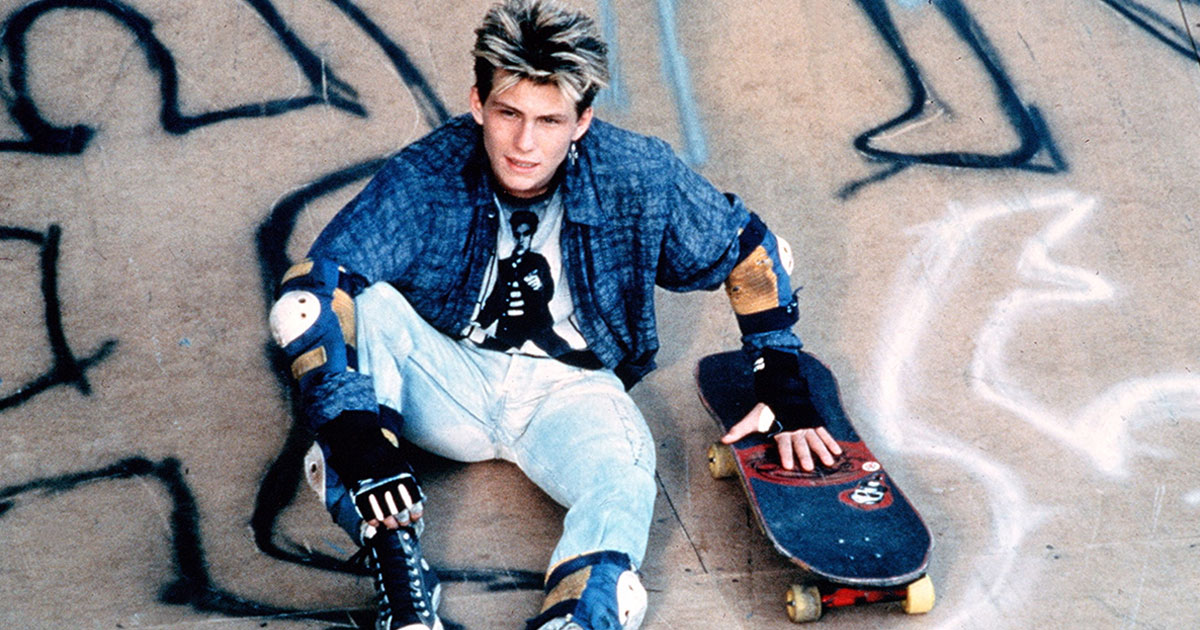
Mr Christian Slater in Gleaming The Cube (1989). Photograph by Twentieth Century Fox/ITV/Shutterstock
Unfortunately, stereotypes quickly began to rise along with the prominence of skateboarding. Due to the lack of public knowledge about cannabis and the incorrect assumption that anyone who used cannabis is a lazy stoner, the “stoner skateboarder” became a term that people would incorrectly apply to anyone who skated. Skate culture’s stylistic ties to hip-hop reinforced this view: because many hip-hop artists were now lyricizing about smoking cannabis, stereotypes that once applied to hip-hop, in general, were extended to skateboarders as well.
Put simply: cannabis went against the social norms of the time. Skateboarders were simply more open about their cannabis use compared to the larger community. Stereotype or not, cannabis was an influential component in the rise of skate culture in the 1990s.
Cannabis Goes Medicinal
As the years went on, American culture became more open to cannabis, and many states began legalizing its use for medicinal purposes. As previously stated, both THC and CBD have demonstrated therapeutic benefits that appeal to the public and skateboarders alike, including insomnia relief, pain relief, anxiety relief, and more. Of course, THC-heavy strains and products can produce the enjoyable euphoria that is such a significant component of the playful “stoner subculture.”
In particular, skateboarders and other athletes began to embrace CBD for its ability to improve anxiety, inflammation, chronic pain, and more without the psychoactive effects of THC. Skateboarding is a very physical sport, and the injuries can be severe if something goes wrong. For that reason, CBD was championed by skateboarders who were hesitant to skate while high. This included the likes of Tony Hawk, who, after being open about his experimentation with THC, advocated for the medicinal use of CBD.
Skateboarding and Cannabis – When Should the Two Converge?
Now that nearly half the states in the US have legalized recreational (or adult-use) cannabis – and the majority of others have at least some form of medicinal cannabis – people of all persuasions are more open about cannabis use than ever before. In fact, cannabis, skateboarding, and even hip hop are so widely accepted as street cultures that have made their way into the suburbs that you can find fascinating collaborations between all your favorite personalities. You’ll find collabs between skaters and cannabis brands featuring products like medicinal CBD patches, rolling trays, streetwear, and more. Someday soon, we may even see the rebirth of the infamous and highly controversial “Weed Stash Pocket” shoes put out by Chad Muska.
With this rise in prevalence, skateboarders are left to wonder: when is the best time to use cannabis?
Skateboarding While High
Some skateboarders consume cannabis right before a practice session and end up skating high. However, if you aren’t used to the combination, the timing might not be right for you. In fact, it all comes down to tolerance. For some people, feeling high throws off the coordination required to pull off intense tricks and avoid injury.
Other skateboarders find being high reduces their inhibitions, which allows them to go for more elaborate tricks. Inadvertent spills and falls may also hurt a bit less. However, if you get injured while high, you may want to avoid making the same mistake again.
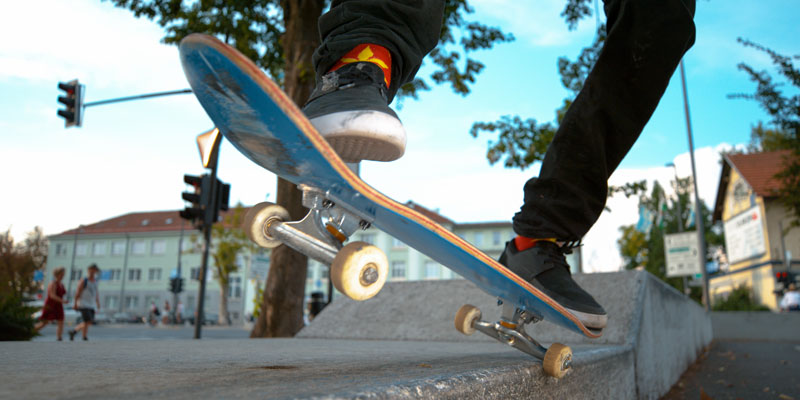
Cannabis After Skateboarding
The benefits of using cannabis after a skateboarding session are a bit more apparent. Not only can cannabis provide pain relief from an injury you acquired during practice, but it can also relax you and allow you to bond with other skateboarders. Using cannabis after a session to relax is very common, and this experience improves the camaraderie of your friends and other cannabis users.
Skateboarding requires a unique perspective, and this sport can provide a large amount of potential for learning and performing new tricks. If being high while skateboarding isn’t your thing, using cannabis afterward to reflect on your practice and create new ideas can keep your passion going.
Cannabis and Competition
While cannabis comes with its own pros and cons, the substance has been outright banned in competitions in the past. The debate over cannabis and skateboarding competitions continues to this day, though the first notable instance occurred in 1998.
The 1998 Olympic Games
Canadian snowboarder Ross Rebagliati won the first Olympic Gold Medal in the sport in 1998. However, he later learned that he had failed a drug test for THC, though he claimed he had been exposed to second-hand smoke at a party weeks earlier. This led to the International Olympic Committee (IOC) stripping Rebagliati of his medal.
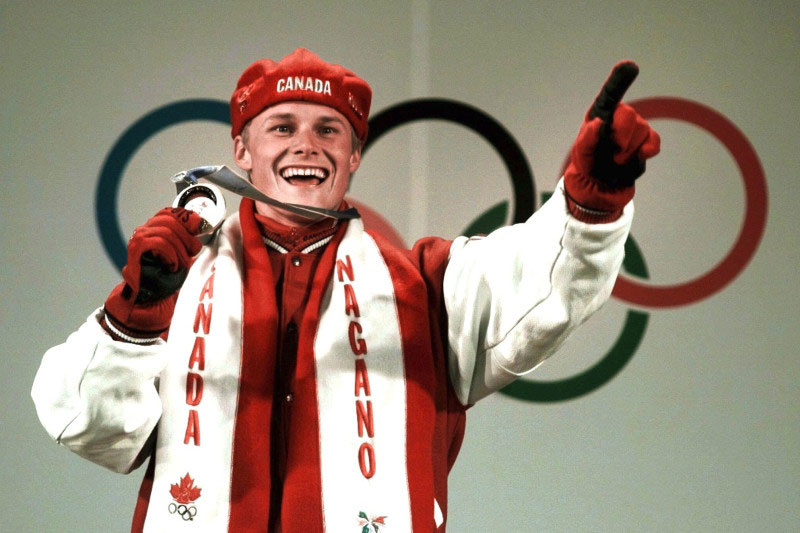
Image via Bleacher Report
While he received his medal again two days later, as cannabis was not yet on the banned substances list, it was clear the IOC had their criticisms over cannabis use.
The IOC placed cannabis on the official list of banned substances in 1998, stating that it was a performance-enhancing substance.
As we mentioned earlier, while cannabis has significant pain-relieving benefits for some people, many argued that there was no advantage provided athletes didn’t compete while high. As the debate progressed, compromises were made. For example, the World Anti-Doping Agency (WADA) increased its tolerance for THC by increasing the maximum acceptable levels in the blood. Because of this, athletes who only use cannabis outside of practice and performances may be able to continue use.
Is Cannabis Banned in Sports Today?
Even with rules against THC becoming more relaxed, this cannabinoid compound remains on the WADA’s banned substances list. Skateboarding first became a sport in the Olympic Games in 2020, so it remains unclear how cannabis use will be addressed during the 2024 Games. Still, while controversy could arise in the future, the time leading up to the event also allows the opportunity for more compromise.
WADA reached a compromise previously regarding THC in the blood, and there’s a possibility for increased concessions, including CBD products containing a small amount of THC. With more discussion, cannabis could be removed from the IOC’s banned substances list entirely. Only time will tell.
Cannabis and Skateboarding FAQs
The history between cannabis and skateboarding spans decades, and time has only increased curiosity about how the two co-exist today.
Kind Meds: High-Quality Medical and Recreational Cannabis
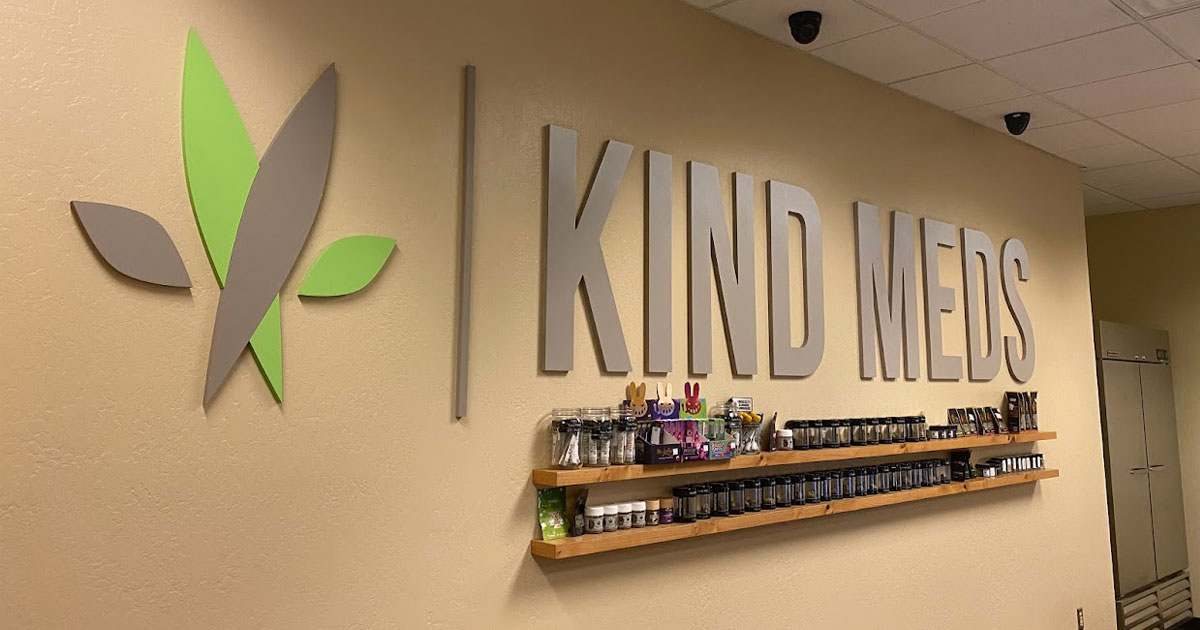
Hip-hop, skateboarding, and cannabis cultures have generated some controversy throughout the past 40 years, both separately and together, and continue to be relevant today. While some people still believe in the “skateboarder stoner” stereotype and prefer that both cannabis and skateboarding stick to the streets, that assumption is beginning to change as skateboarding has blossomed into a legitimate competitive sport. Many skateboarders have advocated for the use of cannabis products to improve the livelihood of athletes, and the public is beginning to take note.
Whether you’re into skate culture or are just on the hunt for high-quality cannabis products, Kind Meds has you covered. We are proud to stock a wide variety of cannabis products ideal for use before, during, or after your next skate session.






